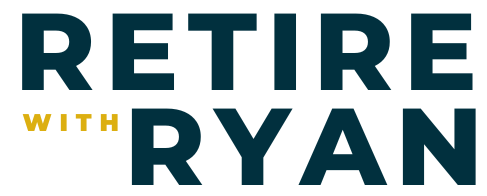Dispelling 7 Myths about Indexed Universal Life Insurance with Andy Panko, #192
What is Indexed Universal Life Insurance? Is it something you should consider investing in? Are the rumors you’ve heard about it true? In this episode, Andy Panko (of Tenon Financial) and I dispel 7 myths that are circulating about UILs and we cover what you need to know to make an informed decision about the insurance product.
You will want to hear this episode if you are interested in...
What is Indexed Universal Life Insurance? [1:46]
Myth #1: It’s a secret the wealthy don’t want you to know about [4:30]
Myth #2: The IUL cost is lower than a well-managed mutual fund [7:34]
Myth #3: IULs can give you a tax-free retirement [10:18]
Myth #4: An IUL means you can be your own bank [12:20]
Myth #5: Life insurance is a tier-one asset for the banks [16:04]
Myth #6: IULs are better than 401k plans [19:31]
Myth #7: IULs are a “can’t lose” monetary asset [23:59]
Should you consider investing in an IUL? [28:24]
What is Indexed Universal Life Insurance?
Indexed Universal Life Insurance is often pitched and marketed as a retirement income tool under a host of other names. It’s a complicated product, often sold via misleading information. At its core, It’s a life insurance policy with a death benefit that can build cash value within the policy.
You can take loans against it and money out of it. Some of the benefits can be used toward long-term care expenses. It can be a useful and multi-purpose product. However, misleading claims are often made about these policies during the sales process.
Myth: The IUL cost is lower than a well-managed mutual fund
An IUL is a multi-decade-long product. It’s a lifetime commitment. The up-front fees are large. It can be more than 10% the first year and 6–8% beyond that. By the time you get to the 10th year, the fees can be lower (under 5.5%). I bought an IUL and the up-front costs were 17% for the first year.
When you blend it out over the life of the product, it will not be as low as a managed index fund. It’s not reasonable to expect. And you’re not actually invested in index funds—you get exposure through the insurance company buying options on the underlying index.
Myth: An IUL means you can be your own bank
You aren’t borrowing money from a bank. And the money in the policy continues to earn interest. You can borrow against the IUL and use the money however you’d like. But it’s no different than if you took a home equity line of credit against your house. You still own the house and it’s full price appreciation but you have a loan collateralized by your house.
People will say that Walt Disney founded Disney because he borrowed against his whole life insurance policy. People insinuate that Disneyland wouldn’t exist without an IUL. All said and done, he took a $50,000 loan against his life insurance policy but it was only 0.66% of the total capital required to launch Disneyland. Life insurance wasn’t the missing link.
Myth: IULs are a “can’t lose” monetary asset
The cash value of your account earns interest and it will never be lower than zero. However, you can’t own that cash value in isolation. There are annual fees associated with the policy. Even in the years where you get 0%, you have fees and costs that will cause your cash value to decline. That is still losing money.
Most of them also have a commitment period. If you want to walk away with your money, you’ll likely get charged a hefty fee to do so. If you hold the product for the rest of your life, you will in time have more cash value than you put in. But in the early years, you will have less money than you put in.
Insurance products are designed to be long-term. The people who sell these products are paid on commission. So surrender penalties reimburse the insurance company if the policyholder bails out early.
Should you consider investing in an IUL? Listen to hear what Andy factors into the decision-making process.
Resources Mentioned
Subscribe to the Retire with Ryan YouTube Channel
Andy’s website: Retirement Planning Education
Connect with Andy Panko, CFP®, RICP®, EA on LinkedIn
